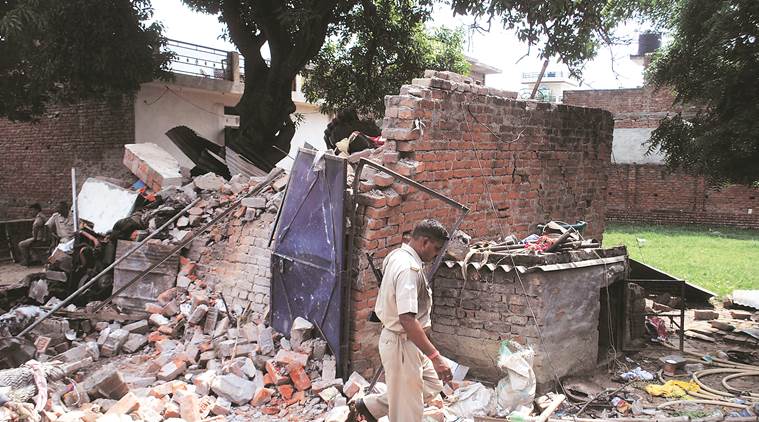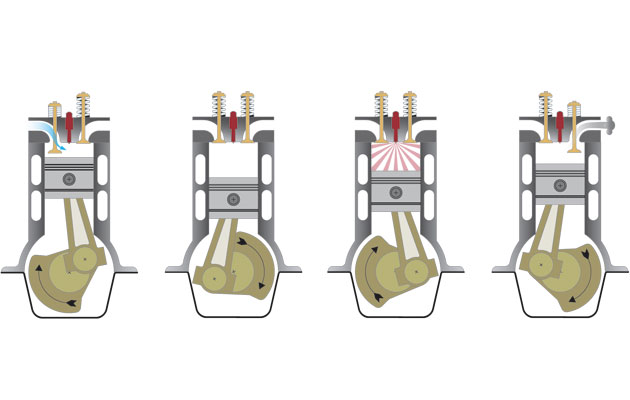Get Tech Tips
Subscribe to free tech tips.
The Dangers of the “Diesel Effect” (Compressor Explosion)

My friend Ami Slavin requested that I write about this important topic in response to the horrifying videos showing up online of death and gore associated with compressors exploding. He pointed out that the “diesel effect” can be the cause, so let's explore what may be—and likely is—leading to these horrible incidents.
 In a diesel engine, there are no “spark plugs” like a traditional gas engine. Instead, the engine allows air and atomized fuel to enter. Then, it compresses it to a much higher level than a gas engine, so much so that the air temperature increases to the point that the fuel spontaneously combusts (autoignition), causing an explosion that drives the piston. Like all combustion, this process requires:
In a diesel engine, there are no “spark plugs” like a traditional gas engine. Instead, the engine allows air and atomized fuel to enter. Then, it compresses it to a much higher level than a gas engine, so much so that the air temperature increases to the point that the fuel spontaneously combusts (autoignition), causing an explosion that drives the piston. Like all combustion, this process requires:
Fuel + Oxygen + Heat
The fuel is diesel, oxygen is in the air, and the heat or temperature increase is created by high compression levels.
If any of this sounds familiar, it is much like an A/C or refrigeration unit, just without the fuel and air parts of the equation—at least that's what we think.
This study shows that the “diesel effect” can occur inside an HVAC/R system, even if it is exceptionally rare and can be easily prevented.
Inside of many modern systems, you have oil, which is combustible at very high temperatures. Mineral oil, for example, has a flash point of about 355 degrees F, which is unlikely in an air conditioning system. For it to burn at the flash point, it requires an ignition source like a spark. Autoignition is the spontaneous combustion of oil or another flammable substance at a given temperature, a much higher temperature than the flash point.
Lately, we've seen more and more flammable refrigerants (propane, isobutane) and slightly flammable refrigerants (R-32) being used widely overseas and in smaller instances in the US. We even see 30-lb jugs of “drop-in” refrigerant for R-22 on eBay and elsewhere that turn out to be largely R-290 (propane). The study above and one performed by Purdue show that even non-flammable refrigerants will burn in addition to the oil if the temperatures rise high enough and enough oxygen is present.
With all of these factors, let's look quickly at what we can do to prevent this exceptionally rare issue.
Evacuate Properly
A system that is properly evacuated will have little to no oxygen mixed with the refrigerant and oil. No oxygen means no combustion. This is likely why many of the explosions are happening in countries with poor installation and evacuation practices.
Pressure Switches are Important
Low pressure or loss of charge switch will shut the system off before the low side runs in a vacuum; this will help prevent drawing air into a leaking system and prevent a compressor from running with no cooling provided by returning refrigerant. A high-pressure switch is an obvious preventative because it will help reduce the possibility that a compressor could get to a high enough pressure for autoignition to occur.
Proper Overload Protection
So long as a motor has an overload that is properly designed, sized, and installed, it will shut the compressor off from overtemperature far before the motor gets hot enough for combustion of non-flammable refrigerants.
Combustible Refrigerants
In the case of combustible refrigerants, there is always a danger of combustion in cases of brazing and soldering or during terminal venting. It is critical that proper precautions be taken to purge the system completely with an inert gas and ventilate the area before it is exposed to a torch or sparks. Because you cannot always be aware if someone may have “dropped in” a flammable refrigerant, these are good practices even if you think the refrigerant is non-flammable. It's also another reason to cut out old components rather than unsweating them when making a repair.
Pump Down With Care
Before you pump down a system, consider that the unit may be severely overcharged or have a microchannel condenser. If you attempt to pump down a unit in either of these cases, you can build up huge pressure and temperatures very quickly. High temperatures and pressures will increase the chances of a dangerous explosion due to high pressure, even if not from combustion.
Combustible Recovery
If you are working with a known combustible refrigerant, make sure your recovery machine is rated for it before performing a recovery.
Be Careful With What You Work On
Sometimes, products can make it into the marketplace that isn't properly rated and tested up to US and European safety standards. If you see a system that looks suspect, especially in the ductless and self-contained refrigeration market, it may be a good idea to stop and do some research.
In closing—
- Keep your eyes open
- Evacuate well (pull a proper vacuum)
- Purge and flow nitrogen to keep oxygen and residual refrigerant away from your torch work
- Keep proper safeties in place and add them where appropriate
- Think before recovering or pumping down
These tragic events are very few and far between, so I don't want to be alarmist. Just stay informed and use good practices, and all will be well.
—Bryan











Comments
To leave a comment, you need to log in.
Log In